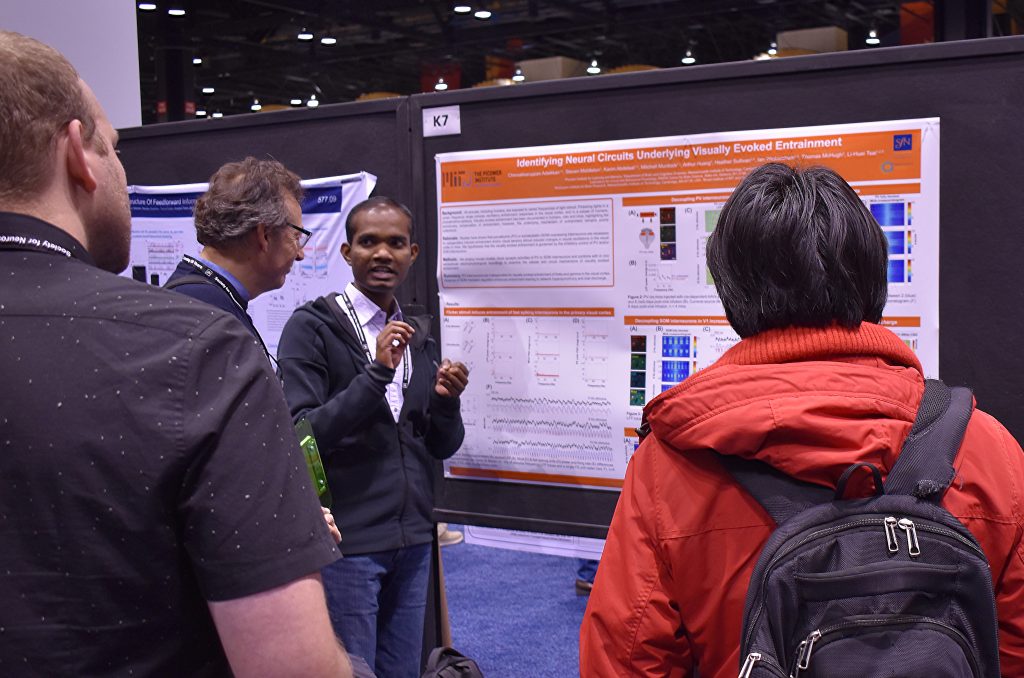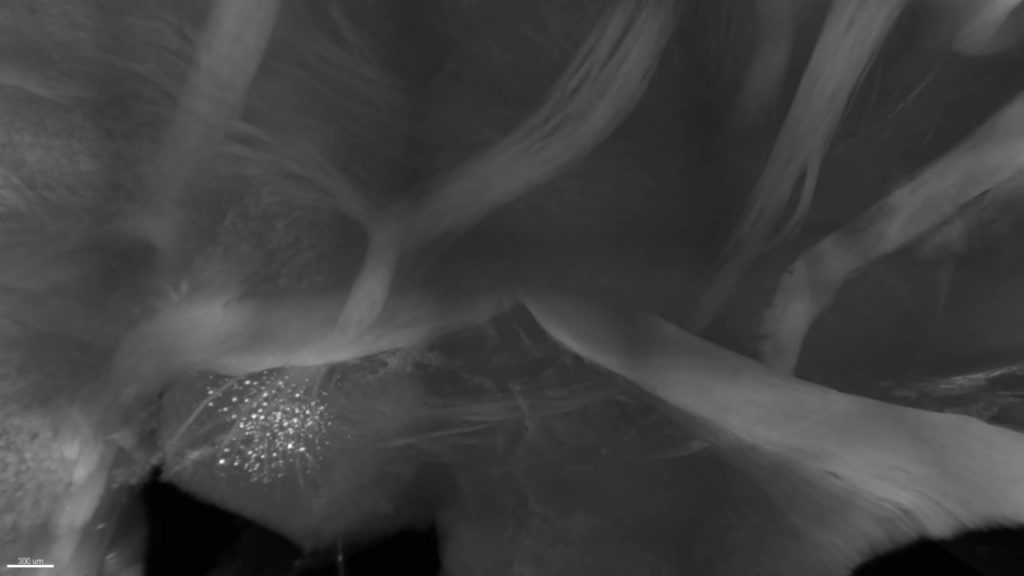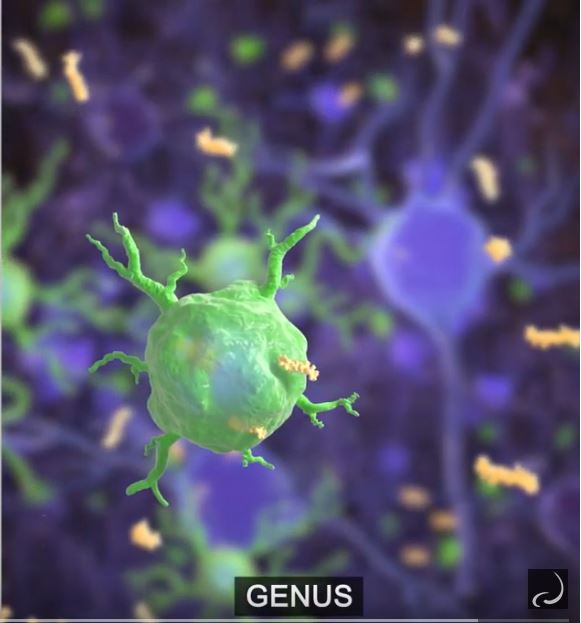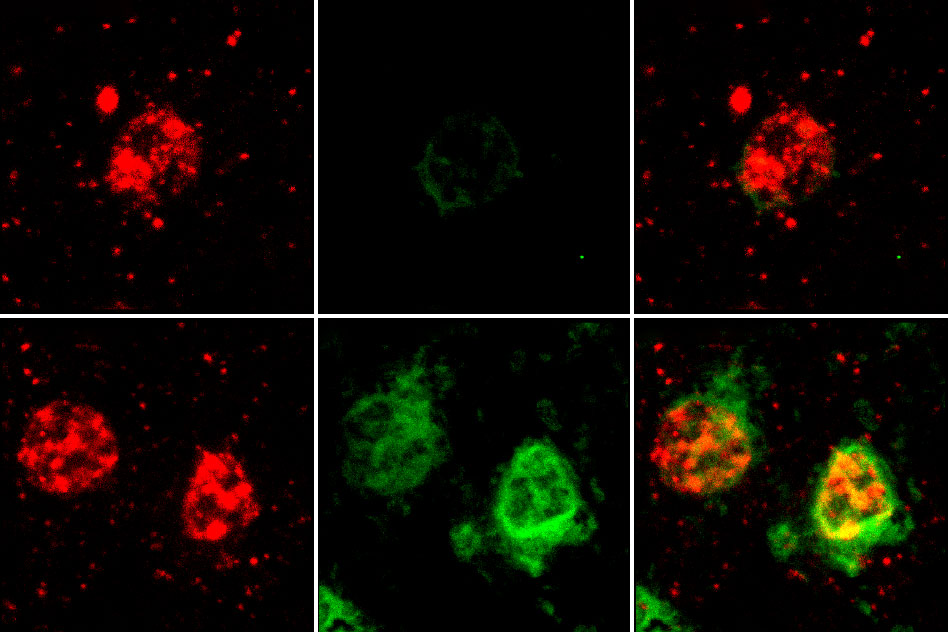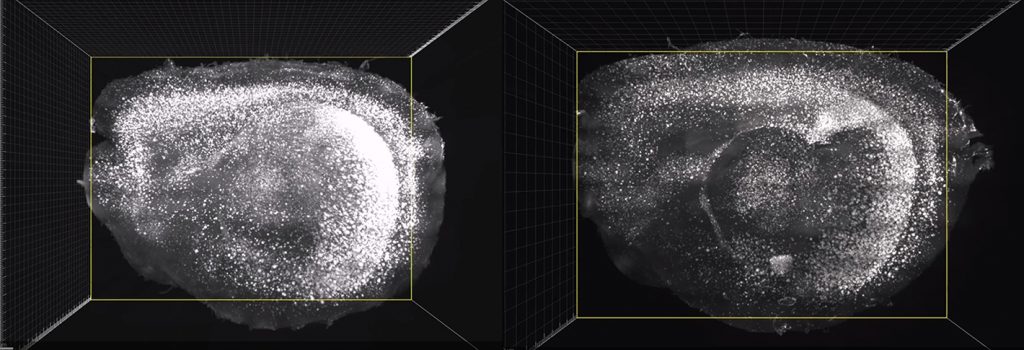The sweeping extent to which increasing 40Hz “gamma” rhythm power in the brain can affect the pathology and symptoms of Alzheimer’s disease in mouse models has been surprising, even to the MIT neuroscientists who’ve pioneered the idea. So surprising, in fact, they can’t yet explain why it happens.
In three papers, including two this year in Cell and Neuron, they’ve demonstrated that exposing mice to light flickering or sound buzzing at 40Hz, a method dubbed “GENUS” for Gamma ENtrainment Using Sensory stimuli, strengthens the rhythm across the brain and changes the gene expression and activity of multiple brain cell types. Pathological amyloid and tau protein buildups decline, neurons and their circuit connections are protected from degeneration and learning and memory endure significantly better than in disease model mice who do not receive GENUS.
In a new review article in Trends in Neurosciences two researchers leading those efforts lay out the few knowns and many unknowns that must be understood to determine how the widespread effects take place. It’s a challenge they relish because the answers could both break new scientific ground and help them improve how GENUS could become a therapeutic or preventative approach for people.
“While we know it affects pathology in mice, we want to understand how because that will help us understand and refine potential treatment,” said lead author Chinnakkaruppan Adaikkan, a postdoc in the lab of senior author Li-Huei Tsai, Picower Professor of Neuroscience and director of The Picower Institute for Learning and Memory.
Adaikkan has been interested in understanding how neural activity produces brain rhythms since his doctoral research. At MIT, he is channeling that passion into understanding how sensory stimulation can entrain oscillations.
“That’s what drives me to come to the lab every day to study these mechanisms,” Adaikkan said. “When we got the data from the first mouse where we recorded from the visual cortex, the hippocampus and the prefrontal cortex we were surprised to see that visual stimulation entrains in these brain regions. That was very exciting but we have a very long way to go to understand how this happens.”
The new paper raises that question and many others for the field. What cells underlie the brain’s response to GENUS? How do gamma rhythms engage non-neuronal cells such as astrocytes and microglia? How does it propagate beyond the brain regions responsible for perception? How extensively can enhancing gamma affect cognition? Does long-term stimulation affect brain circuit connections and how they change?
Cell roles
Studies of how groups of neurons engage in coherent oscillations of electrical activity have yielded two models to explain gamma rhythms. Both involve an interplay between excitatory and inhibitory neurons but differ on which type leads the interaction, Adaikkan and Tsai wrote. In his work, Adaikkan is attempting to dissect the roles of specific neuron types in GENUS and how closely those patterns mirror other sources of gamma, such as that invoked by cognitive tasks.
GENUS affects more than neurons. Tsai’s lab has found that microglia change their gene expression, their physical form, their protein-consuming behavior and their inflammatory response depending on the Alzheimer’s model involved. Work from another group showed that blocking vesicle release in astrocytes can hinder gamma power in mice and Tsai’s group found that auditory GENUS recruits an increase reactive astrocytes, which are more inclined to consume pathological proteins.
The new paper offers three hypotheses about how such “glial” cells are involved: They might contribute directly to gamma entrainment by regulating the flow of ions that carry electrical charge; even if they don’t contribute to rhythms, their ionic sensitivity may still make them responsive to gamma changes; they might instead be affected by changes in levels of neurotransmitters as a result of gamma.
Moreover, different glia may also become involved because of their proximity to electrical couplings between neurons called synapses, or because of how their activity is otherwise governed by neural activity.
The broader brain
That GENUS extends to the hippocampus, which is key for memory, and the prefrontal cortex, which is key for cognition, is likely a factor in how it preserves brain function. But again there are competing models for how increased gamma could facilitate multi-regional communication. In one, the authors write, coherence at the same frequency optimizes communication, while in the other model, one region’s gamma activity directly drives activity in regions downstream. New experiments that directly manipulate inter-regional circuits, they argue, could help resolve which model better explains gamma entrainment’s effects.
Finally, the effects of GENUS on brain function and behavior also aren’t fully explained. The Tsai lab’s has shown significant effects on spatial memory and some effects on other forms of memory, depending on the stimulation method. Other studies have shown that stimulating brain rhythms by other means, such as via genetic or optogenetic manipulations in mice, or via transcranial stimulation in humans, can also improve functions such as working memory. Adaikkan is interested in closing a gap between those studies and the Tsai lab’s work: Most studies measure cognitive performance during stimulation, while the Tsai lab has done so after the conclusion of repeated stimulation. He said he’d like to also test how mice perform while GENUS is actively underway.
“Our lab is excited to tackle these many hypotheses and to see how the field tackles many more,” Tsai said. “GENUS has created many intriguing new questions for neuroscience.”
The JPB Foundation, The Robert A. and Renee E. Belfer Foundation, and the Jeffrey and Nancy Halis Family Foundation have supported the work.
